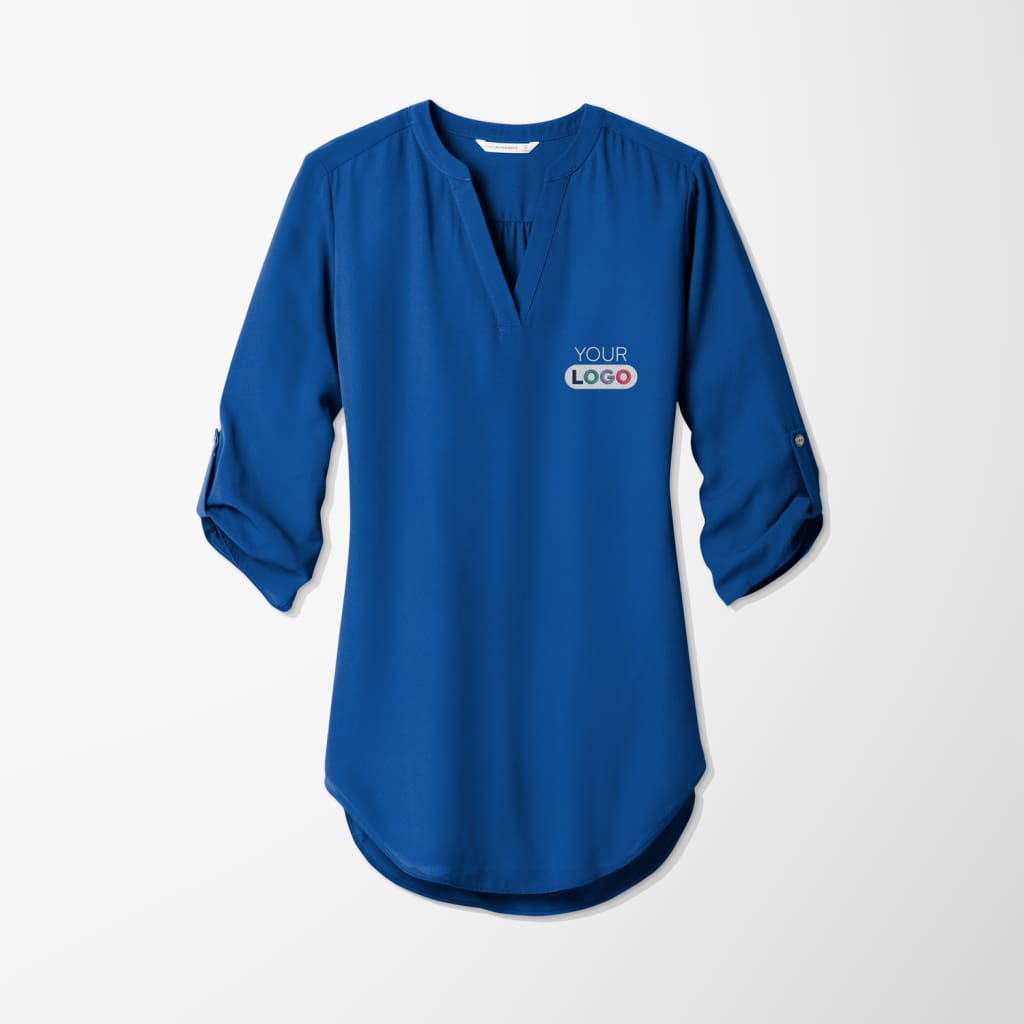Understanding Garments: The Relevance of Fabric Selections in Your Closet
The choice of material in clothes plays an essential duty in both looks and capability. Different products use differing degrees of convenience, longevity, and breathability, directly influencing the user's experience. Comprehending these nuances can enhance one's closet significantly. Lots of forget exactly how these choices can influence not just individual design, yet additionally sustainability. What textile decisions could redefine your wardrobe and align it with both design and obligation?
The Role of Fabric in vogue and Performance

Common Material Kinds and Their Attributes
When selecting clothes, understanding the qualities of common textile types is essential for making informed options. Cotton, a widely-used natural fiber, is recognized for its breathability, flexibility, and gentleness, making it suitable for casual wear and day-to-day garments. Linen, one more all-natural alternative, boasts excellent moisture-wicking properties and an unique structure, suitable for warm climates.Wool, typically favored for its warmth and sturdiness, varies in excellence; merino woollen is soft against the skin, while coarser types are utilized for outerwear. Synthetic textiles like polyester and nylon supply resilience and resistance to wrinkles, making them popular for activewear and travel garments. Blends, which incorporate synthetic and all-natural fibers, can improve capability while preserving comfort. By recognizing these material features, people can pick clothes that straightens with their way of life and visual choices.
Breathability and Convenience: Choosing the Right Fabrics for Various Environments
Choosing the appropriate fabrics for numerous environments can considerably boost comfort and overall wearability. Breathable products are vital in warm environments, as they permit air circulation and moisture evaporation. Fabrics such as cotton, bed linen, and moisture-wicking synthetics efficiently draw sweat far from the body, keeping the wearer cool and dry. Alternatively, in cooler climates, thicker materials like wool or fleece offer insulation while keeping breathability, making certain warmth without overheating.Additionally, the selection of textile weight plays a vital role; light-weight textiles are better for summer, whereas larger options are suited for winter months wear. Recognizing the one-of-a-kind residential or commercial properties of each material enables individuals to clothe appropriately for differing climate condition. Eventually, picking breathable and comfy fabrics tailored to certain environments can substantially improve everyday comfort and boost the general experience of wearing garments.
Longevity and Care: Exactly How Fabric Affects Long Life of Your Closet
Choosing the right materials can significantly impact the durability and care requirements of a wardrobe. Fabrics such as cotton and polyester are recognized for their strength and simplicity of maintenance, making them ideal for everyday wear. In contrast, delicate materials like silk and shoelace call for even more mindful handling and specialized cleansing methods, which can raise the moment and initiative required for care. Branded Clothing.Durability is additionally influenced by the textile's weave and coating; snugly woven textiles often tend to stand up to wear and tear far better than loosely woven choices. Furthermore, artificial blends frequently offer boosted durability, combining the best high qualities of numerous fibers.Understanding the treatment guidelines for each textile is essential, as inappropriate drying out or cleaning can bring about premature wear. Ultimately, picking long lasting products can result in a longer-lasting wardrobe, lowering the regularity of substitutes and adding to a much more lasting style choice
The Impact of Textile on Fit and Shape

Sustainable Material Choices: Making Eco-Friendly Choices
The effect of textile expands past fit and shape to include environmental aspects, motivating an pop over to this site expanding rate of interest in sustainable fabric selections. Eco-friendly fabrics, such as natural cotton, hemp, and Tencel, are acquiring grip among consumers that focus on sustainability in their closets. These materials are commonly generated with less chemicals and water, decreasing their environmental footprint.Additionally, recycled materials, made from post-consumer waste, supply an innovative service to the textile sector's air pollution trouble. Brands significantly accept openness in their sourcing methods, allowing customers to make enlightened choices concerning their purchases.Choosing lasting fabrics not just supports ethical techniques but also motivates find out here the garment industry to embrace even more liable manufacturing approaches. As understanding of environmental issues rises, individuals are advised to show on the long-term effect of their textile options, promoting an activity in the direction of a much more eco mindful and sustainable strategy to fashion.
Elevating Design: Just How Fabric Can Change a Clothing
While many might concentrate on color and cut when picking an attire, the selection of textile plays a necessary duty in raising design and boosting overall appearance. Different products communicate distinctive state of minds and messages; as an example, silk exhibits luxury and elegance, while denim supplies a casual, loosened up ambiance. The texture and drape of a material can considerably alter the shape, with structured materials supplying a polished look and softer ones developing an extra fluid, kicked back aesthetic.Moreover, the weight of the textile influences wearability across periods. Lightweight textiles like linen and cotton are excellent for summertime, while heavier products such as woollen and velvet provide warmth and elegance in cooler months. Recognizing textile buildings, such as breathability and stretch, likewise encourages individuals to make informed choices that enhance convenience without jeopardizing style. Inevitably, the ideal fabric can transform an attire from ordinary to phenomenal, making it a crucial factor to consider in any wardrobe.
Often Asked Inquiries
Just how Do I Recognize the Textile Web Content of My Apparel?
To recognize material content, one can analyze treatment labels, conduct burn tests for fiber identification, or seek advice from fabric swatches. These methods aid separate materials, making sure informed choices for clothes treatment and maintenance in everyday wear.
Can Fabric Option Affect My State Of Mind or Confidence?
Fabric selection can substantially influence an individual's mood and self-confidence. Branded Clothing. Specific materials might evoke feelings of comfort or sophistication, while others can feel uncomplimentary or limiting, eventually influencing self-perception and psychological well-being throughout the day
What Fabrics Are Best for Delicate Skin?
For people with sensitive skin, natural materials like bamboo, cotton, and bed linen are often recommended. These products are breathable, hypoallergenic, and less likely to cause inflammation, making them suitable choices for convenience and skin wellness.
Just how Do I Correctly Clean and Look After Various Fabrics?
To properly clean and care for various materials, one have to think about each material's certain needs, consisting of temperature level setups, detergents, and drying techniques, guaranteeing durability and keeping the material's initial high qualities for ideal use.
Exist Particular Fabrics for Athletic or Efficiency Use?
Athletic or performance wear usually makes use of fabrics such as nylon, polyester, and spandex. These products are designed for moisture-wicking, breathability, and flexibility, boosting activity and comfort during exercises while giving durability and assistance. Alternatively, in cooler Recommended Site climates, thicker textiles like woollen or fleece provide insulation while preserving breathability, guaranteeing heat without overheating.Additionally, the option of fabric weight plays a crucial duty; light-weight textiles are better for summer, whereas heavier options are matched for winter wear. In comparison, fragile materials like silk and lace call for more mindful handling and specialized cleaning approaches, which can boost the time and effort needed for care.Durability is likewise affected by the material's weave and surface; snugly woven materials have a tendency to withstand wear and tear much better than freely woven choices. In comparison, inflexible textiles can limit movement however supply a classic, sleek look.Moreover, the thickness and appearance of the fabric can affect the visual perception of body form. The effect of textile extends beyond fit and silhouette to incorporate ecological variables, triggering an expanding rate of interest in lasting textile options. The texture and drape of a fabric can dramatically modify the shape, with structured textiles offering a sleek appearance and softer ones developing a much more fluid, relaxed aesthetic.Moreover, the weight of the material influences wearability across seasons.